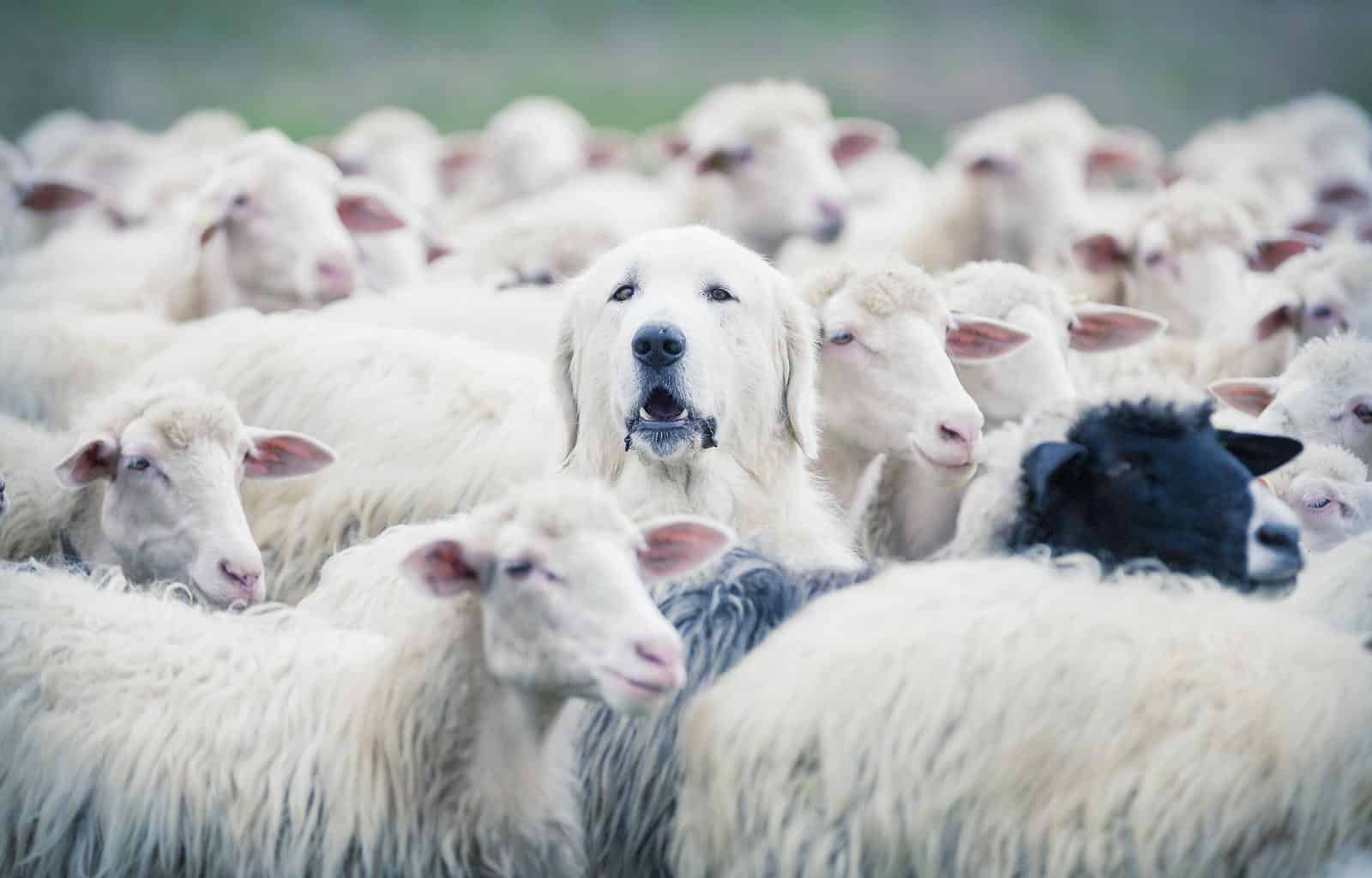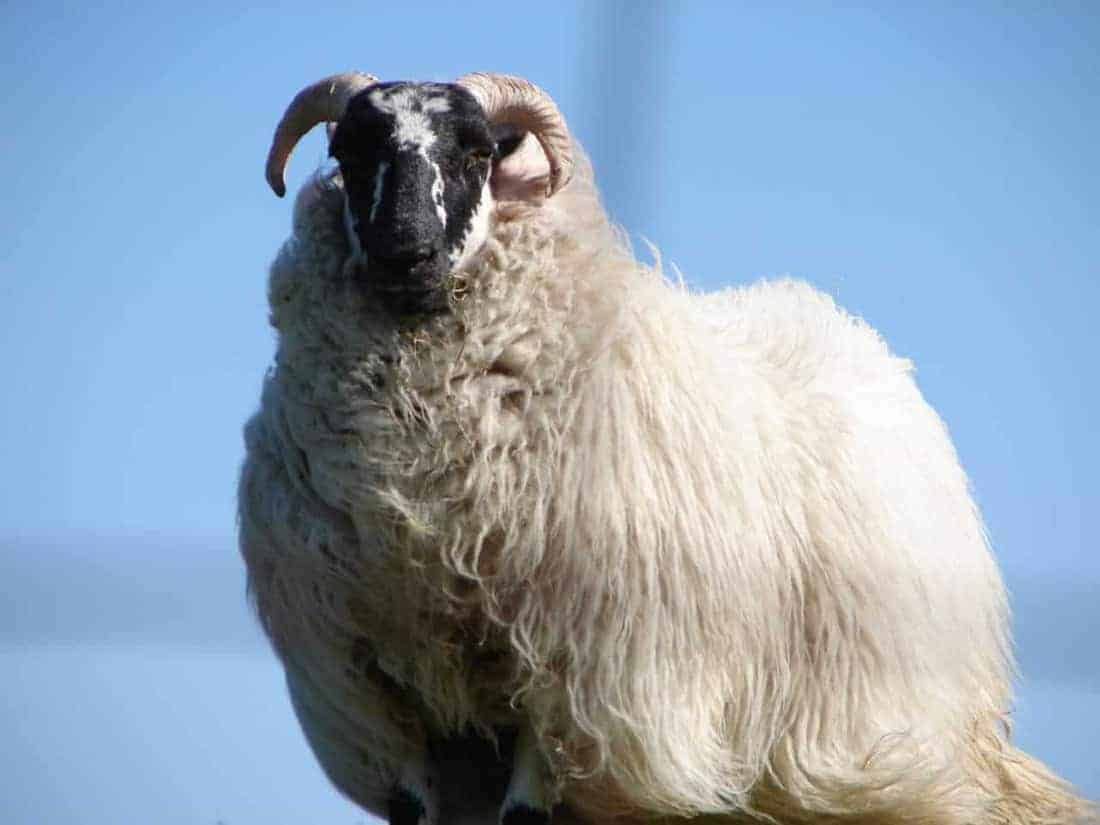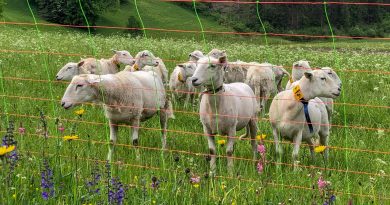Wolf Plan France: a critical analysis
France recently started with the implementation of a new six-year management plan for wolves. An important statement from the Minister of Environment and Minister of Agriculture describes how ‘the Plan seeks the balance between biodiversity preservation in France, of which the wolf is a part, and protection of livestock owners’.
The country has an estimated wolf population between 265 and 402 individuals, according to the counting in March 2017. The wolf causes heated discussions between farmers, hunters, NGOs and politicians. Official numbers indicate 10 000 kills annually. A relative high number, it may seem. However, kills from stray dogs are estimated to be twice as high. The Plan agrees to increase control of these stray dogs. And we should not forget to take into consideration the amount of animals that annually die from natural causes, approximately 120 000 animals. If we then look at the total number of 8,2 million sheep and goats in France, the impact of the wolf seems almost nothing (0,1%). Also, the last proper wolf diet study in France dates back more than 10 years. A objective study for renewed data is therefore crucial.
Please also read: France implements new six-year Wolf Plan
New Wolf Plan for 500 wolves
There was positive and critical news regarding the new French Wolf Plan recently. “France to let wolf population grow by 40% despite anger from farmers” opened The Guardian. “France could soon be home to 500 wolves as part of species conservation plan” said The Independent. But the 100-page document describes more plans, besides allowing the wolf population to grow. Researchers estimate the current demographic viability of wolves at 500 individuals. This number flashed in all the news headlines. However, the plan also mentions that this threshold can be adjusted every year, according to the opinion of the Plan’s scientific council. The hunting quota for 2018 is 40 wolves. After this year, the quota will be 10% of the official annual estimates. In addition, the estimates of hybrid wolves in France is approximately 2% of the total population. The Plan will allow assessment whether these hybrids can be killed besides the annual culling quota.
Annual culling quota remains questionable
Scientific studies on the wolf population development, show a modelled growth rate of 12%. This happens to be the same as the actual allowed annual culling. The ‘normal’ rate of 10% can expand with an additional 2% if hunters reach the annual quota before the end of the year. On top of that, the government can allow even more additional killing in unique cases. In the past 2 years, the quota was reached before the end of the season. So technically, France does not allow much room for population growth. Instead, the Plan confirms it allows killing of individuals to control the expansion of the wolf. This is one of the three common reasons Member States use to allow killing of wolves, irrespective of the European Union’s legislation and FFH Directive.
In addition, as the Plan also states, the annual survival rate of wolves is 0,78. So almost 1 in every 5 wolves dies from other causes. The Plan claims the sum of these annual survival and culling rates would lead to wolf extinction in France with less than 10% chance over 100 years. But let us remember that there is a rather crucial difference between ‘going extinct’ and having a ‘sustainable population’.
Importance of proper herd management
The Plan agrees that ‘proper protection limited the frequency of wolf attacks, and thereby number of depredation.’ A extensive study from 2017 also showed how herd management is more effective than killing wolves. As a result, the predation on protected herds is indeed less than on unprotected herds. We can see the same results in Germany and Switzerland. Still the Plan states that protection effectiveness has limits, depending on the location.
The Plan states that financial aid will cover 80% of costs for guarding, dogs and fences, and 100% for vulnerability analysis. Protection measures are recommended in combination to be most effective. ‘A shepherd and protection dog show the highest level of efficiency’ states the Plan. This complies with one of the four steps to solve wildlife conflict, according to a new study from the European Parliament’s Policy Department.
Support for livestock owners and shepherds
The Wolf Plan describes how the French government will provide technical support to the livestock owners. They will establish a sound network around the use, breeding and training of guard dogs. Additionally, the government will support shepherds with training, promotion, equipment and other means. The recommended measures include, guarding from shepherds, electric fences (3m high for night enclosures), guard dogs and a vulnerability analysis. The fladry, sound and visual deterrent do not show lasting effect. The most financial aid by far, almost 80%, goes out paying shepherds to do their job. The government wants to improve the living conditions of the shepherd. They will install, improve and finance facilities on the alms.
Compensation payments
The depredation occur more often in specific locations. One in three attacks occurred at only 3% of French livestock owners. Compensation payments, in 2016 88,7% of the cases worth 3,2 million EU, will be more structured. Eligible costs for direct losses, indirect losses and missing animals are reimbursed. Compensation was 94% for sheep, less than 1% cattle. A new chance requires livestock owners to have implemented protection, before being eligible to claim losses. Protective measures are determined through contractual arrangements. Furthermore, the government will revise compensation and market prices.
Who can kill wolves?
There are four groups of people who can kill wolves. The national ‘Wolf Brigade’ from ONCFS, volunteer officials with certification, volunteer hunters, and livestock owners under special conditions. The Plan only allows killing of wolves if no other solution is possible, but should not affect the population conservation status. However, when at least three attacks in a commune took place in a single year, shooting wolves becomes legally allowed. Livestock owners still need a hunting license, acquired with a 1-day training and 1-hour exam. National Parks and protected areas will remain a ‘safe haven’ for the wolves. The Plan does not allow shooting inside these territories.
Read the full national Wolf Plan 2018-2023 below:
Stay up to date on the Wilderness news, subscribe to our Newsletter!












There is a lot of scientific data available from various countries, showing that a wolf’s diet largely reflects the available prey in their territory. In most cases, 70 to even more than 90 percent can be roe deer. In countries with high wild boar densities, their part in the diet can also be significant (such as in central Italy). Smaller or bigger wildlife usually reflects only a smaller part of the diet. Insufficiently protected livestock, such as sheep and goats, take on average not more dan 1 or 2 percent, in extreme cases 8 percent of the diet. This also shows that a wolf does not need to eat sheep or goats to survive, there is plenty of wildlife in nature available. People should realise that with effective measures, depredation rates on their animals can be minimised.
It all begs the question– what makes up the diet of a wolf. ? Surely they hunt smaller prey like rats and mice etc which must offer a benefit to farmers as it costs them nothing to have this controlled activity on their lands. Perhaps all is not so bad if studies are conducted into other natural food scources utilised by wolves.
Those data show that an average wolf in France should eat between 25-37 sheep annually. On the basis of my former experiences I think that those figures could compete for world record. At the same time apparently nobody was interested in finding out what part of wolf’s diet actually conssists of farm animals. Therefore I think that this whole plan is just a bureucratic cover for incompetentness. In my opinion, European Commission should take a close look at this case – exactly like they did in the case of Białowieska Forest in Poland.